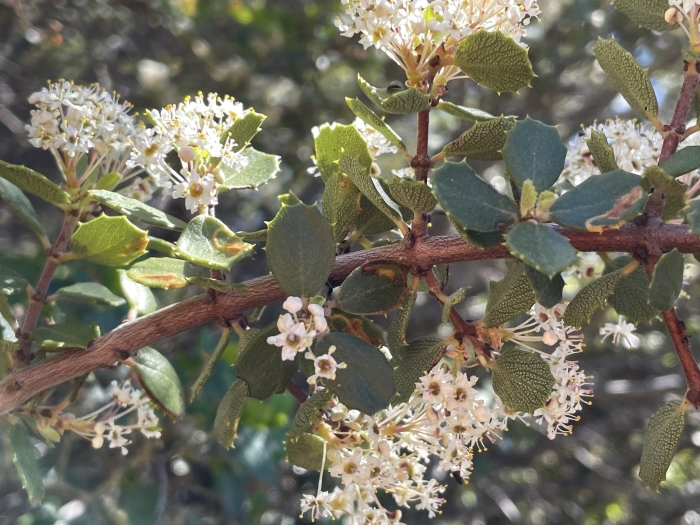Desert Ceanothus
(Ceanothus greggii)
Desert Ceanothus (Ceanothus greggii)
/
/

© Madeleine Claire
CC BY 4.0
Image By:
© Madeleine Claire
Recorded By:
Copyright:
CC BY 4.0
Copyright Notice:
Photo by: © Madeleine Claire | License Type: CC BY 4.0 | License URL: http://creativecommons.org/licenses/by/4.0/ | Uploader: madily | Publisher: iNaturalist |





















































Estimated Native Range
Summary
Ceanothus greggii, commonly known as Desert Ceanothus, is a semi-deciduous shrub native to chaparral, desert scrub, and dry forest regions in the Southwestern USA and California, as well as Northern Mexico. It typically grows to a height of 0.2 to 4 meters and is characterized by its many-branched, woody structure with gray, somewhat woolly stems. The shrub produces clusters of white flowers that are less than 2 cm long and bloom in the spring, emitting a strong, pleasant fragrance. The fruit is a horned capsule that bursts open to release three seeds, which require heat from wildfires for germination, a process known as thermal scarification.
Desert Ceanothus is valued for its drought tolerance and fragrant flowers, making it a suitable choice for xeriscaping and naturalistic plantings in arid regions. It is often used for erosion control on slopes and as an ornamental in water-conserving gardens. This shrub thrives in full sun and can adapt to various soil types, including those with fast, medium, or slow drainage. While it requires little maintenance once established, it is important to avoid overwatering to prevent root rot. Desert Ceanothus is also beneficial to wildlife, providing nectar for pollinators and habitat for birds.CC BY-SA 4.0
Desert Ceanothus is valued for its drought tolerance and fragrant flowers, making it a suitable choice for xeriscaping and naturalistic plantings in arid regions. It is often used for erosion control on slopes and as an ornamental in water-conserving gardens. This shrub thrives in full sun and can adapt to various soil types, including those with fast, medium, or slow drainage. While it requires little maintenance once established, it is important to avoid overwatering to prevent root rot. Desert Ceanothus is also beneficial to wildlife, providing nectar for pollinators and habitat for birds.CC BY-SA 4.0
Plant Description
- Plant Type: Shrub
- Height: 9-13 feet
- Width: 9-13 feet
- Growth Rate: Moderate
- Flower Color: White, Blue
- Flowering Season: Spring
- Leaf Retention: Semi-Deciduous
Growth Requirements
- Sun: Full Sun
- Water: Low
- Drainage: Fast, Medium
Common Uses
Bee Garden, Bird Garden, Butterfly Garden, Drought Tolerant, Fragrant, Hummingbird Garden, Low Maintenance, Showy Flowers, Street Planting
Natural Habitat
native to chaparral, desert scrub, and dry forest regions in the Southwestern USA and California, as well as Northern Mexico
Other Names
Common Names: Mohave Desert Ceanothus
Scientific Names: , Ceanothus greggii, Ceanothus greggii var. greggii, Ceanothus frankliniae, Ceanothus greggii var. frankliniae, Ceanothus greggii var. orbiculatus, Ceanothus verrucosus var. greggii,
GBIF Accepted Name: Ceanothus greggii A.Gray